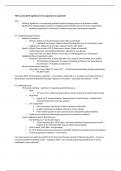TWE was the BCM significant in the opposition to Apartheid?
Intro:
- Defining ‘significant’ as threatening apartheid system/changing nature of opposition notably
- Significant in shaping popular opinion & mobilizing youth (despite short term & gov suppression)
o Redefined opposition (+ enhanced), involved new groups, international attention
P1: ‘reshaping popular opinion’
- Redefined ‘blackness’
o Africans, Indians & Coloured people could relate & participate
Mobilized new groups, Indians/coloured participated (e.g. Uni of Western Cape)
o English press, Afrikaners & even gov replaced ‘bantu’ with ‘black’
- Media, SA Black Theatre Union (1972), black poets, slogans (‘black is beautiful’)
o Unified oppressed, psychological liberation, appealed to new groups
o Unity shown by 1972 Black People’s Convention (1,400 delegates from 145 groups)
- Highlighted flaws of apartheid system
o Education (1959 Extension of Bantu Education Act, unequal, overcrowded, poor quality)
1972 Abraham Onkgopotse Tiro speech attacking Turfloop uni for inequalities &
discrimination expelled, implies threat
- Received international attention
o Steve Biko’s funeral (died 12th Sept 1977) – >10,000 attended including foreign ambassadors
Key BCM leader
Can argue didn’t directly oppose apartheid – unconvincing, simply did so in a unique way (improved lives of
black people, threatened apartheid ideology, helped to turn people – especially international – vs NP)
P2: Mobilizing youth
- The Soweto Uprising – significant in opposing apartheid because…
o large
16th June 1976- 2,000 marching students met by 50 police at Orlando West School
o Organised
August 1976, Soweto Students’ Representative Council formed – initially led by
Tsietsi Mashinini (Tiro’s former student)
o Gov suppression
Gov commission calculated 575 dies in Soweto & aftermath
Leaders imprisoned on Robben Island (e.g. Terror Lekota)
Most violent episode of state repression since Sharpeville, global attention
o Students not armed but increasingly prepared to use violence vs property
- Youth mobilisation due to BCM because…
o Key BCM figures = key Soweto figures
Tsietsi Mashinini (key 1976 leader, led Soweto Students’ Representative Council) =
student of Tiro (formed SASM, became SASO representative)
o SASO formed 1969, Biko = first president
o By 1972, Black Consciousness Movement and Black People’s Convention launched (students)
o Uniquely appealed to students – more radical
Can argue Soweto not solely due to BCM (1974 Treurnicht decision, growth of African education) – however,
unconvincing (BCM mobilized youth) – regardless, BCM = key, directly opposed apartheid (level of youth
mobilisation unprecedented)




